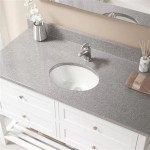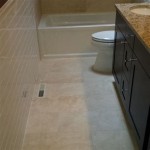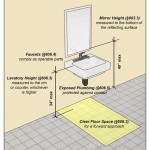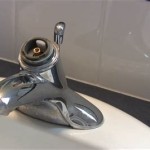How To Brighten Up A Dark Bathroom Without Windows
Bathrooms lacking natural light can often feel cramped, dull, and uninviting. The absence of windows presents a unique challenge in creating a bright and airy space. However, with strategic planning and implementation of clever design techniques, a windowless bathroom can be transformed into a refreshing and functional area. This article explores various methods for maximizing light and creating the illusion of spaciousness in bathrooms devoid of natural illumination.
Maximizing Artificial Lighting
Artificial lighting is the primary tool in brightening a windowless bathroom. A single overhead fixture is rarely sufficient to illuminate the entire space evenly. A multi-layered approach is crucial, incorporating different types of light sources to address various needs and create a more balanced and inviting atmosphere.
Recessed lighting, strategically placed across the ceiling, provides a general ambient light. These fixtures should be spaced evenly to minimize shadows and ensure consistent illumination. Select bulbs with a high color rendering index (CRI) to accurately represent colors and avoid a dull or washed-out appearance. LED bulbs are recommended for their energy efficiency and longevity.
Task lighting focuses on specific areas, such as the vanity and shower. Vanity lighting should be bright and shadow-free to facilitate grooming activities like shaving and applying makeup. Sconces mounted on either side of the mirror are preferable to overhead lighting, which can cast unflattering shadows. Consider incorporating LED strip lighting behind the mirror for a soft, diffused glow. In the shower, a waterproof recessed light or a dedicated shower light fixture is essential for safety and visibility.
Accent lighting adds depth and visual interest to the bathroom. This can include under-cabinet lighting, which provides a subtle glow and highlights the floor, or decorative lighting fixtures placed strategically to draw the eye. Consider using dimmer switches for ambient and accent lighting to adjust the brightness according to the time of day and mood. This allows for a more relaxed and spa-like atmosphere during evening baths and a brighter, more energizing environment in the morning.
Choosing the right color temperature for the light bulbs is also critical. Cool white light (4000K-5000K) mimics daylight and is ideal for task areas where clarity is essential. Warm white light (2700K-3000K) creates a more inviting and relaxing atmosphere, suitable for ambient and accent lighting. Experiment with different color temperatures to find the combination that best suits individual preferences and the overall design aesthetic.
Optimizing Reflectivity and Color
Dark colors absorb light, while light colors reflect it. Therefore, choosing a light and reflective color palette is crucial for brightening a windowless bathroom. White, off-white, and pale shades of blue, green, and gray are excellent choices for walls, ceilings, and flooring.
Glossy or semi-gloss paint finishes reflect more light than matte finishes. Opt for a higher sheen level, especially in smaller bathrooms, to maximize light reflection. Consider painting the ceiling a shade lighter than the walls to create the illusion of height. However, very glossy surfaces will highlight imperfections and may require more meticulous surface preparation.
Incorporate mirrors strategically to amplify the effect of artificial light and create the illusion of spaciousness. A large mirror above the vanity is a standard feature, but consider adding additional mirrors to other walls, particularly those facing light sources. A full-length mirror can make a small bathroom feel significantly larger. Be mindful of what the mirror reflects; preferably, it should reflect light or a visually appealing element of the room.
Reflective materials, such as glass tiles, metallic accents, and polished chrome fixtures, further enhance light reflection. Incorporate these elements sparingly to add sparkle and visual interest without overwhelming the space. Avoid using dark or heavily textured materials that absorb light and can make the bathroom feel even smaller and darker.
Consider using light-colored grout with tiles. Dark grout can create a grid-like effect that visually shrinks the space. Light grout blends seamlessly with the tiles, creating a more cohesive and expansive look.
Creating the Illusion of Natural Light
While it is impossible to replicate natural light perfectly in a windowless bathroom, several techniques can create a convincing illusion, enhancing the overall sense of brightness and spaciousness.
Consider installing a "faux window." This can be a framed piece of artwork depicting a landscape scene or a custom-designed panel with integrated LED lighting that mimics the appearance of sunlight streaming through a window. Position the faux window in a location where a real window might typically be found to enhance the illusion.
Light tubes or solar tubes can channel natural light from the roof down into the bathroom. These systems consist of a light-collecting dome on the roof, a reflective tube, and a diffuser lens in the ceiling of the bathroom. While this requires professional installation, it can provide a significant amount of natural light without the need for a traditional window.
Another option is to use a light box with a translucent panel that diffuses light evenly. Backlight the panel with LED lights that mimic the color temperature and intensity of natural sunlight. These light boxes can be custom-made to fit specific spaces and can be designed to resemble skylights or windows.
Consider using sheer or translucent window film on a plain glass panel to create a sense of privacy while allowing light to pass through. This can be applied to a shower door or a decorative panel on the wall.
Introduce living plants to the bathroom. Plants not only add a touch of natural beauty but also help to purify the air. Choose plants that thrive in low-light conditions and high humidity, such as snake plants, ferns, and peace lilies. The presence of greenery can subtly trick the brain into perceiving the space as brighter and more open.
By implementing these strategies, one can significantly enhance the brightness and appeal of a windowless bathroom. A combination of strategic lighting, reflective surfaces, and clever design elements can transform a dark and uninviting space into a refreshing and functional sanctuary.
How To Brighten Up A Bathroom Without Windows By Mira Showers
5 Solutions For Brightening Up A Windowless Bathroom Houzz Ie
5 Ideas To Open Up A Windowless Bathroom
How To Brighten Up A Bathroom Without Windows By Mira Showers
7 Ways To Open Up A Windowless Bathroom Bob Vila
How To Brighten Up Your Windowless Bathroom Elisse Moreno Realtors With Re Max Real Estate
5 Ideas To Open Up A Windowless Bathroom
7 Top Tips For Bathrooms Without A Window
Bathroom Colors For Bathrooms Without Natural Light Forbes Home
Tips For Sprucing Up A Bathroom With No Windows Trends Windowless Design
Related Posts







